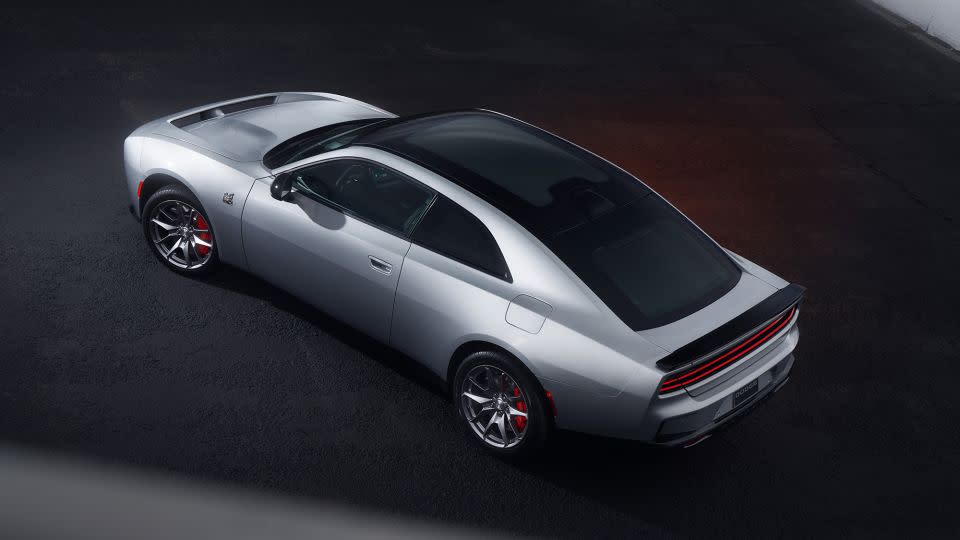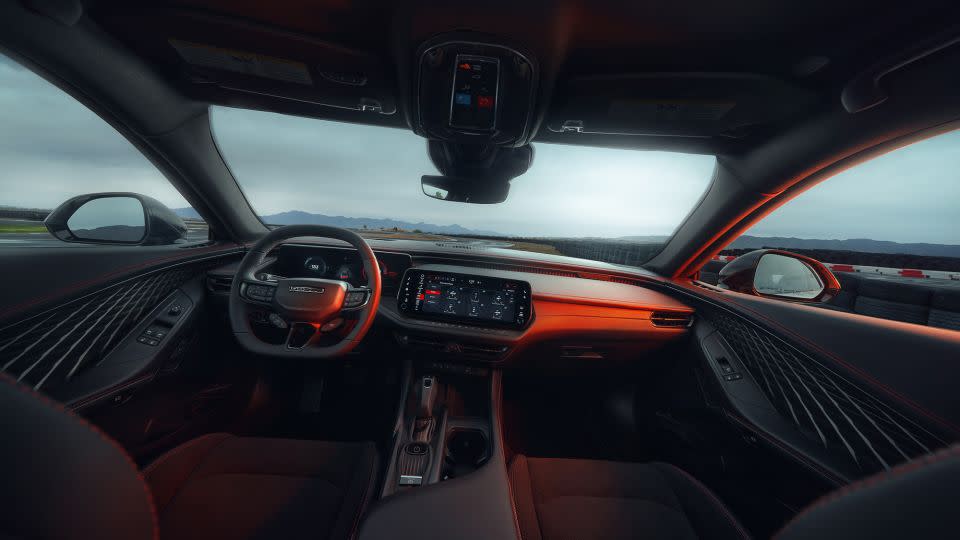Dodge’s new electric muscle car can have a gas engine if you want
Muscle car shoppers will face some important decisions with the 2024 Dodge Charger. First, the new Charger will be available as a battery-powered electric car or with a gasoline engine. And for the first time it will be available with two or four doors.
Also, unlike most EVs, the electric Chargers will be extremely loud, at least when drivers want them to be, thanks to a series of baffles and chambers that will blast sound to the outside world.
But while it will certainly be fast and loud, there is one thing that would have been previously inconceivable in a muscle car. While the Charger will have the option of a traditional petroleum-burning engine, one thing that won’t be available is a V8. And that option will not become available in the future, either, according to Dodge. When gasoline-driven Chargers go into production early next year, they will be powered by turbocharged six-cylinder engines.
If buyers want the biggest, brawniest Charger, they’ll have to go with battery power. The most powerful and fastest version, at least initially, will be the fully electric Dodge Charger Daytona Scat Pack, capable of producing up to 670 horsepower from two electric motors. All versions of the new Charger, whether electric or gas, will have all-wheel-drive.
The 2024 Charger is replacing two cars that have come to define the Dodge brand since at least the early 2000s. The four-door Charger and two-door Challenger were mechanically very closely related, and neither had been substantially redesigned in at least a decade. Defying auto industry norms, sales of both models continued to be strong throughout their lives, even increasing in their latter years of production, which came to a close at the end of 2023.
Because of the popularity of those two cars, Dodge, which long sold cushy family sedans, cute compact cars like the Neon, and even the first minivan, now proudly self-identifies as a muscle car brand. For today’s Dodge, anything with a whiff of public virtue must explained through an appeal to speed.
“We’re just going to use electrification to make it faster, not more politically correct,” said Tim Kuniskis, the CEO of Dodge, last year when the concept version of the new Charger was revealed.
Offering gasoline power only as an option is one way Dodge is working to meet increasingly strict emissions regulations, while trying not to alienate traditional customers who value the sound and feel of mechanical power.

EVs generally lack sound, beyond the low murmur most emit at low speeds for regulatory reasons. That sound is required so that people can hear that a car is coming.
The electric Challenger Daytona models take this to another level. These cars will have an “exhaust” system solely to pump out loud sounds as the car as being driven. The sounds aren’t produced by speakers, like the those made by typical EVs, but by air pulses forced through pipes with baffles and chambers inside.
This will give drivers, and everyone around the car, the sort of audible signature that would usually come from a traditional internal combustion engine. The sound will increase as the accelerator pedal is pressed down harder reaching decibel levels produced by the high-output V8 muscle cars the new Charger will replace.
The Charger Daytona Scat Pack will be the top performance version, at least initially, with a maximum of 670 horsepower. That much power will enable it to go from zero to 60 miles an hour in 3.3 seconds, according to Dodge. All Chargers, whether gas or electric, will have all-wheel-drive.

The old gasoline-only Challenger muscle car was offered at the end of its production run with with 1,025 horsepower supercharged V8. Given that recent history, it seems unlikely that all-electric Chargers will stop at just 670 horsepower, but nothing more has yet been announced.
The second-most powerful model will be the gas-engined 550-horsepower Dodge Charger SixPack H.O.
The Daytona models will have an aerodynamic wing in the front end. The wing won’t be visible from the side because it’s designed to be flush with the car’s side profile. Dodge has applied for patents on both the front wing design and the noise-making exhaust system.
Making the Charger available in both gas and electric forms is part of parent company Stellantis’s broader global EV strategy. Stellantis also owns the Jeep, Chrysler and Alfa Romeo brands, among many others.
Unlike some automakers, like General Motors, Stellantis doesn’t usually make specific models sold only as EVs. Instead, Stellantis designs vehicles so they can be produced – on the same assembly line – with gasoline engines, electric motors or, in some cases, as plug-in hybrids with both. That way, Stellantis chief executive Carlos Tavares has said, the company can easily make more of whichever type customers want most.
Two-door electric Charger Daytona models will go into production later this year, with gas-powered models as well as four-door Chargers versions available beginning in early 2025.
Dodge has not yet announced pricing.
For more CNN news and newsletters create an account at CNN.com
